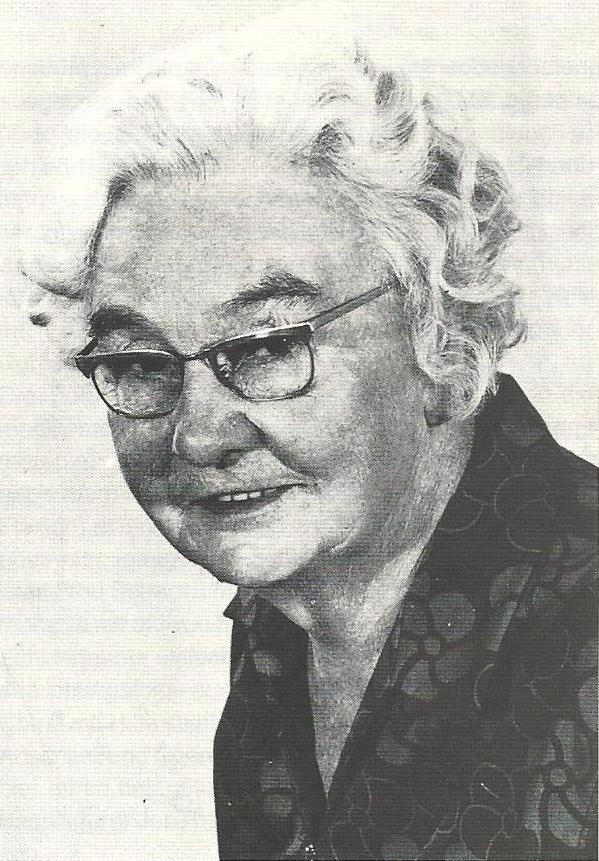
Katharina Schroth
The Beginning
The Schroth Method was created by a German-born physical therapist, Katherina Schroth. In her teenage, she was diagnosed with scoliosis and was physically and psychologically affected by this diagnosis like many other scoliosis patients. She began wearing a brace without achieving the desirable results. The lack of treatment options and the insufficient benefit of wearing a brace made her begin developing the "Three Dimensional Scoliosis Program." Over the years her new discoveries about treating scoliosis patients helped her to refine and complete her technique, which she called "Breathing Orthopaedics." In 1921, she opened her practice in Meissen / Saxony and started treating scoliosis patients from Germany and abroad. (Picture from the book Three-Dimensional Treatment For Scoliosis by Christa Lehnert-Schroth).
Three Dimensional Treatment
Frequently, the Schroth Method is referred to as three-dimensional treatment technique. Scoliosis is causing the spine to compress, shift and rotate. It is a pathology that occurs in three planes. This technique, a unique approach, works on the transverse, sagittal, and coronal planes of the body. The exercises achieve the optimum result when all the pathological spinal deformities are addressed at the same time. The exercise methodology is built to elongate the spine, shift and de-rotate it in a straighter posture.
Curve-specific movements, mental imaging, and body awareness also play significant roles in posture corrections. Especially, specific breathing patterns are important to help to correct the curvature through the rib movement.
Patient Education
A first step in the success of scoliosis re-posturing is the patient education. That includes an intensive but yet easy to understand education about the anatomy of scoliosis and its pathological effects on the spine. By taking the time to understand the ramifications and the benefits of this technique, patient's chances of success greatly improves.
Support and interaction with family members are also favorable success markers. One can perform a series of mobilization techniques at home may require the aid of someone that does not need to be a clinician.
Frequent constructive and corrective feedback from family members during the exercises will encourage the patient on this continuing path.
Non-Invasive and Home-Based
The Schroth Method is a non-invasive treatment option. Although the patient condition and the treating doctor’s recommendation may suggest surgery, we believe that surgery should be the last option. Accurate bracing plays a part in correcting the curvature. We do not offer braces at our facility however based on the Cobb angle we may recommend a Schroth compatible brace. Some bracing methods used with scoliosis patients are not compatible with the Schroth Method exercises. Accurate bracing plays a big part in correcting the curvature.
Schroth exercises are the essential part of this technique. The self-corrective re-posturing exercises are designed based on the type of the curve. Regular and daily routine is the key to success. All the Schroth exercises can be performed easily at home with the use of few small tools like gym ball, yoga belt, resistance band, and long poles.
What Not To Do

Cobb angle
Even though we believe that any physical activity has its benefit, actively using conflicting treatment options or exercises will often lead to more harm than good.
For most people, Yoga is an excellent way of retraining the muscles to behave in a way that allows freedom of movement. For scoliosis patient, Yoga is
not recommended to be incorporated into the daily fitness routine. It is essential that scoliosis patients do not perform any exercises that will include repetitive sideways bending and twisting the torso. These actions can lead to an increase in Cobb angle.
The habitual posture that may have practiced over the years must be recognized and eventually eliminated. For example, reading while lying down on the stomach, sleeping sideways and curling up, caring the school bag on one side, and standing lopsided are few of many positions to avoid.
Other Things To Know
Through a series of active corrections and re-posturing movements, the muscles are retrained to recognize and exhibit the correct posture. For most people this is given, but to the scoliosis patient – to gain the ability to sit, stand and walk upright is a life changing event. To maintain a more balanced posture, one needs a daily exercise routine. Scoliosis Method can not cure the spine deformity, but even the slightest change to improve the condition is beneficial.
The beautiful thing about scoliosis re-posturing program is that it is not a one size fits all solution. Time, effort and concentration on the individual are all at the forefront of this program to help produce the best results. Preventing or stalling curvature progression is the end game, and with dedication and commitment, lasting results can be achieved. This treatment can be started at any stage of the scoliosis condition. It is worthy to note again that it can reduce the curvature, prevent scoliosis from progression, and above all it can reduce or eliminate pain.
